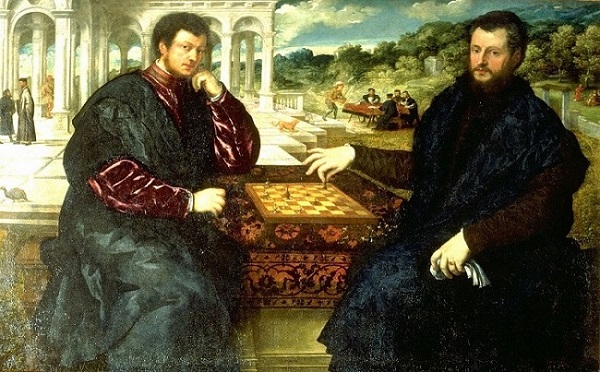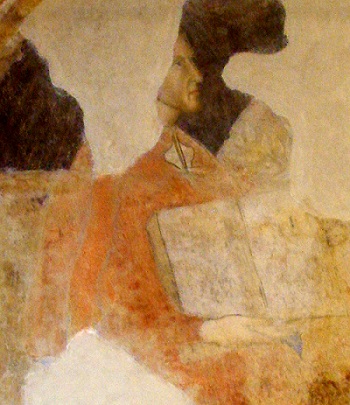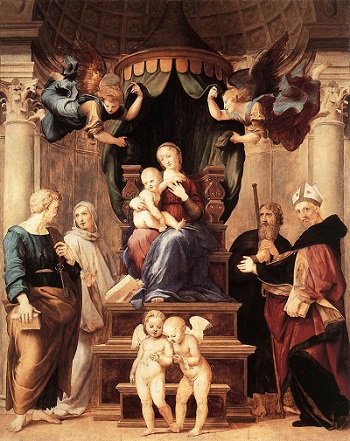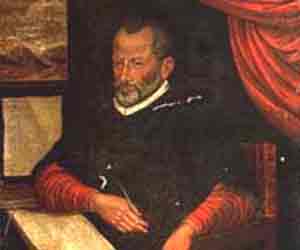
One painting that has long fascinated me and to which I return to view often is The Chess Players by Paris Bordone (1550-1555, Oil on canvas, 1.1 x 1.8m). There are several aspects about this work which fascinate me and I will try to explain this fascination in the short piece.
This painting was one of a number of works which was said to be representative of the patrician life of Renaissance Venice, but it is unusual in that it is a double portrait, rare in portraiture terms, and shows two gentlemen playing chess against a background of what appears to be an elaborate country residence. Patricia Brown (author of Art and Life in Renaissance Venice) suggests that classical loggia in the background may well be more a ‘product of the artist’s fancy’ than an existing residence.
There is extraordinary detail in the work, from the ladies on the lawn under the tree in the far right background, to the table of men playing cards (interestingly a pastime which was deemed a distinctly lower form of entertainment and often censured), the figures engaged in conversation in the left of the picture, aristocratic in bearing, and the solitary hen, all features which move the eye around the work. Then there is the sumptuousness of the robes of the subjects of the portraits, the detail of the ruby ring on the man on the right, the hint of lace on the cuff of his sleeve (not easily identified by the image above), to the intricate detail of what appears to be a rug on which the chess board is placed.
The fact that the men in the portrait are playing chess is also suggested to be representative of the political allegory of civil life, with Patricia Brown suggesting that the chessboard was a ‘metaphor of the well-ordered state in which piece has its correct role and place’.
It has been suggested that this is a portrait of father and son, with the older, bearded player (the father) moving to checkmate his son, thus representing the true nature and role of government, where each man and woman has a place and role to play. You can also see chess pieces tumbling from the table, perhaps a subtle reference to what happens if the structure of society is not maintained, but it could also imply that the men were startled, that the board was disturbed and the pieces fell accordingly.
The gaze of the two gentlemen is directed at the viewer, with the younger (?) of the two showing, in my opinion, a certain arrogance, perhaps representative of the status which he saw himself possessing, while there is a gentleness about the gaze of the older man.
There is a real beauty about this work and whilst it may be significant to view it from the political and social message it was intended to convey, I enjoy the work for its beauty and fluidity. The tragedy is that such a small representation of this painting does not do it justice here, but I would encourage you to seek it out and revel as I do in its majesty.










